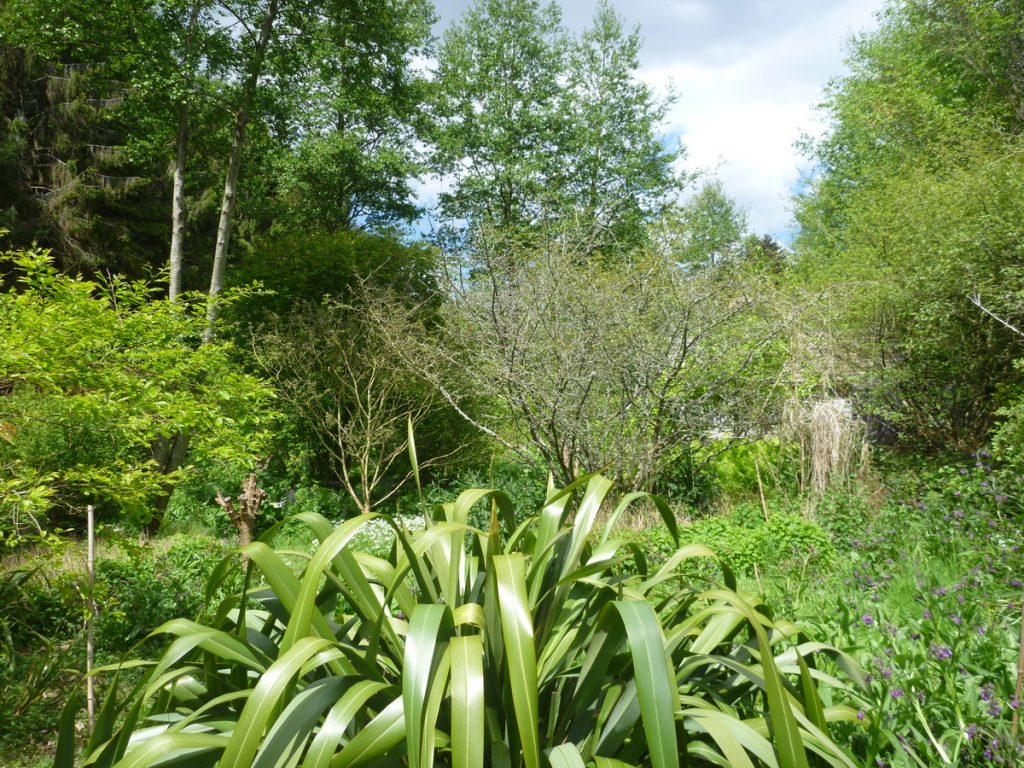
Forest Garden, Dartington (UK)
An edible forest garden is a forest ecosystem related to permaculture gardening, in which a wealth of edible or otherwise usefull species is laid out. Although the principle is ancient and can be found in many cultures, it was reintroduced in our temperate climate zone by Robert Hart with his book Forest Gardening, Rediscovering Nature and Community in a Post-Industrial Age (1997) and further developed by Martin Crawford. Compared to most permaculture gardens and smaller vegetable or plant gardens, a forest garden is generally larger and contains mostly perennial plant species. The principle is the same, though: creating a closed and resilient ecosystem of mutually cooperating species. Diversity in types of microclimates (shaded and sunny, and everything in between) and gradients (taller and lower plants and trees) are important design principles for an edible forest garden. The local conditions, namely the climate, the soil and native species, form the basis for the design. More so than in a permaculture vegetable garden, the various horizontal layers, from the canopy to the deeper soil layers, play a role in the structure of a forest garden. In a well-laidout edible forest garden, every niche is filled and there are no empty spots in the system. Edible species can be taken up in all layers of the system: trees bearing nuts or fruit; berry bushes; rubus species; ground covers, such as strawberries; climbers, such as Indian cress and hardy kiwi; a multitude of herbs and edible tuber and root species.
-Dartington (UK) 1991
-Martin Crawfor
more info: expert Martin Crawford